Germany's New Methane Regulation: What You Need to Know About LDAR Requirements
Germany has recently introduced a comprehensive methane regulation aimed at reducing emissions from various sectors, including oil and gas, coal mining, and landfills. The regulation sets ambitious targets and mandates specific measures, such as Leak Detection and Repair (LDAR) programs, to identify and fix methane leaks. But what exactly does this mean for companies operating in Germany? Let's dive into the key aspects of the regulation and its LDAR requirements.

Overview of Germany's Methane Regulation
Key Provisions of the Methane Regulation
Germany’s methane regulation is a game-changer in the fight against climate change. It establishes a clear framework for monitoring, reporting, and mitigating methane emissions across multiple industries. The regulation sets binding emission reduction targets, with the goal of cutting methane emissions by 30% by 2030 compared to 2020 levels. Companies are required to implement robust LDAR programs, report their emissions data annually, and face penalties for non-compliance. The message is loud and clear: it’s time to get serious about tackling methane.
Sectors and Activities Covered by the Regulation
So, who exactly is impacted by Germany’s methane regulation? The short answer is: a wide range of sectors. From upstream oil and gas exploration to downstream distribution, from active coal mines to abandoned ones, and from landfills to wastewater treatment plants – if your operations involve potential methane emissions, you’re likely covered. The regulation casts a wide net to ensure a comprehensive approach to methane mitigation. No sector can afford to sit on the sidelines.
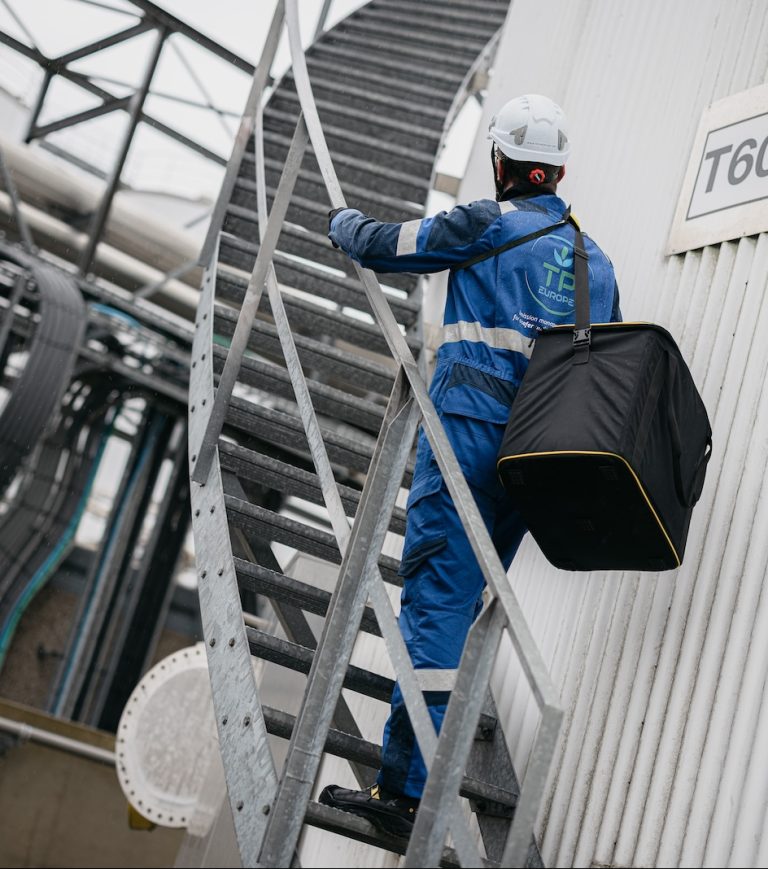
Timeline for Implementation
Now that we know who’s affected, let’s talk about when the regulation kicks in. The timeline for implementation is staggered to give companies time to prepare. The first phase, which includes initial reporting requirements and the development of LDAR programs, starts in 2024. By 2026, companies must have their LDAR programs fully operational and achieve the first round of emission reductions. The final target date is 2030, by which point the 30% reduction goal must be met. It’s a tight schedule, but one that reflects the urgency of the methane challenge.
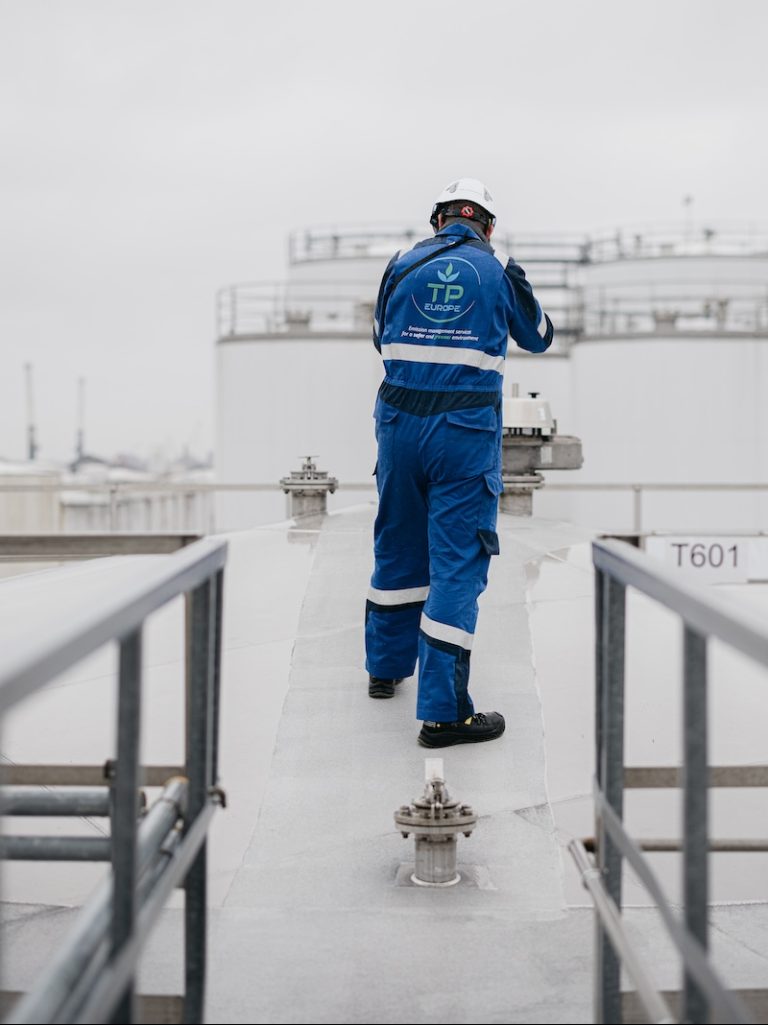
Understanding LDAR Under the Germany Methane Regulation
What is Leak Detection and Repair (LDAR)?
At the heart of Germany’s methane regulation are the Leak Detection and Repair (LDAR) requirements. But what exactly is LDAR? In simple terms, it’s a systematic approach to finding and fixing methane leaks. LDAR involves regularly inspecting equipment and components, such as valves, connectors, and compressors, using specialized instruments like optical gas imaging cameras or portable analyzers. When a leak is detected, it must be repaired within a specified timeframe. The goal is to catch and address leaks early before they can contribute significant emissions.
LDAR is not a new concept, but Germany’s regulation takes it to a new level. The regulation specifies minimum frequencies for LDAR surveys, defines the types of components that must be inspected, and sets strict repair timelines. It also requires companies to use the best available detection technologies and follow standardized protocols. In short, LDAR is no longer an optional exercise – it’s a mandatory and integral part of methane management.
LDAR Survey Frequencies Required by the Regulation
One of the most important aspects of Germany’s LDAR requirements is the frequency of surveys. How often do companies need to inspect their equipment for leaks? The answer depends on the type of facility and the equipment involved. For example:
Facility Type | Equipment Type | Survey Frequency |
Oil and gas production | Valves, connectors, pumps | Quarterly |
Oil and gas transmission | Compressor stations | Monthly |
Coal mines | Ventilation shafts, drainage systems | Continuous monitoring |
Landfills | Gas collection systems | Monthly |
These are just a few examples, but they illustrate the level of detail and stringency in the regulation. The frequencies are designed to ensure that leaks are caught and repaired in a timely manner, before they can contribute significant emissions. Companies must carefully plan and execute their LDAR surveys to meet these requirements.
Components and Equipment Subject to LDAR
Another key aspect of LDAR under Germany’s methane regulation is the scope of components and equipment that must be inspected. The regulation takes a comprehensive approach, covering a wide range of potential emission sources. This includes:
- Valves, connectors, and flanges
- Pumps and compressors
- Pressure relief devices
- Open-ended lines
- Sampling connection systems
- Instrumentation systems
The regulation also covers equipment specific to certain sectors, such as coal mine ventilation shafts and landfill gas collection systems. The goal is to leave no stone unturned in the quest to identify and mitigate methane leaks. Companies must develop detailed component inventories and ensure that their LDAR programs cover all the necessary equipment.

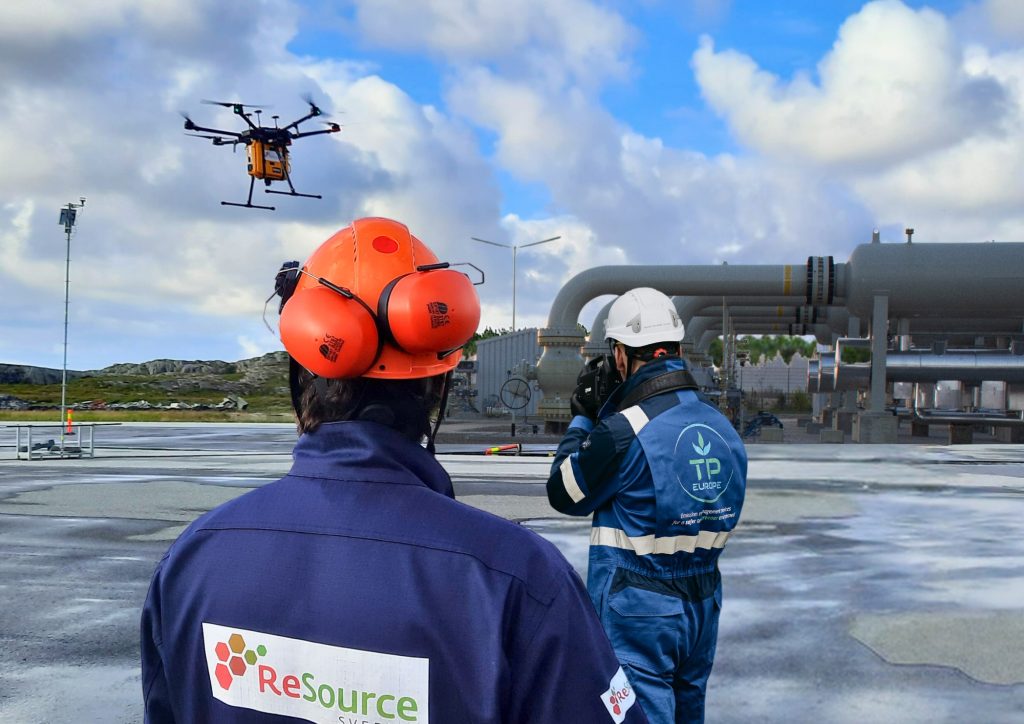
Inspection Methods and Technologies for LDAR
To meet the LDAR requirements of Germany’s methane regulation, companies must use approved inspection methods and technologies. The regulation specifies several options, each with its own strengths and applications. Let’s take a closer look at some of the key methods:
Optical Gas Imaging
Optical Gas Imaging (OGI) cameras are a powerful tool for LDAR. These specialized cameras can visualize methane leaks in real-time, making them ideal for quickly scanning large areas and pinpointing leak sources. OGI cameras use infrared technology to detect the absorption of methane in the atmosphere, creating a visual image of the leak. They can be used for both close-range inspections and long-range surveys, making them a versatile choice for many facilities.
Portable Analyzers and Leak Detectors
Portable analyzers and leak detectors are another important tool in the LDAR toolkit. These handheld devices can measure methane concentrations at specific points, helping to quantify the size of leaks and confirm repairs. Common types include flame ionization detectors (FIDs), photoionization detectors (PIDs), and laser-based analyzers. Each has its own advantages in terms of sensitivity, response time, and ability to detect different gases. Companies must choose the right analyzer for their specific needs and train their personnel to use them effectively.
Audio, Visual and Olfactory Inspections
While high-tech methods like OGI and portable analyzers are critical for LDAR, sometimes the simplest techniques can also be effective. Audio, Visual and Olfactory (AVO) inspections involve using human senses to detect potential leaks. This can include listening for hissing sounds, looking for visual cues like dust plumes or vegetation damage, and even smelling for unusual odors. AVO inspections are typically used as a screening tool to identify areas that warrant further investigation with more sophisticated methods. They are an important complement to instrument-based surveys.
Regardless of the specific methods used, Germany’s methane regulation requires companies to follow best practices for LDAR. This includes properly calibrating and maintaining equipment, training personnel, documenting inspections, and ensuring data quality. Companies must also stay up-to-date with emerging technologies and be prepared to adopt new methods as they become available. The goal is to use the most effective and efficient techniques to find and fix methane leaks.

Leak Repair Timelines and Requirements
- Finding methane leaks is only half the battle – they must also be repaired in a timely and effective manner. Germany’s methane regulation sets clear timelines and requirements for leak repairs. When a leak is detected during an LDAR survey, the clock starts ticking. Companies must take immediate action to assess the severity of the leak and initiate repairs. The regulation specifies different repair timelines depending on the size and location of the leak. For example:
- Leaks above a certain threshold must be repaired within 5 days of detection
- Leaks below the threshold must be repaired within 30 days of detection
- Leaks that cannot be repaired within the required timeframe due to technical or safety reasons must be documented and repaired as soon as possible
Companies must also follow best practices for leak repairs, such as using high-quality replacement parts and performing post-repair inspections to confirm the leak has been fixed. All repair activities must be documented and reported to the authorities. Failure to meet the repair timelines or properly fix leaks can result in penalties and enforcement actions.
The leak repair requirements of Germany’s methane regulation are designed to ensure that once leaks are found, they are addressed quickly and effectively. By setting clear timelines and standards, the regulation helps to minimize the duration and impact of leaks. Companies must have robust repair processes in place and be prepared to mobilize resources to meet the regulatory requirements.
Techniques and Best Practices for LDAR Compliance in Germany
Complying with Germany’s methane regulation and its LDAR requirements is no small feat. It requires a comprehensive and proactive approach that goes beyond just conducting surveys and repairs. Companies must develop robust LDAR programs, train their personnel, and continuously improve their processes. Let’s explore some of the key techniques and best practices for LDAR compliance in Germany.
Developing an LDAR Program
The foundation of LDAR compliance is a well-designed and properly implemented LDAR program. Companies must develop a written LDAR plan that outlines their strategies, procedures, and resources for detecting and repairing methane leaks. The plan should include:
- Identification of covered facilities and equipment
- Leak detection methods and technologies
- Survey frequencies and schedules
- Repair timelines and procedures
- Recordkeeping and reporting requirements
- Quality assurance and quality control measures
Developing an effective LDAR program requires a cross-functional effort involving personnel from operations, maintenance, environmental, and safety departments. Companies should seek input from all relevant stakeholders and ensure that the program is tailored to their specific facilities and risks. They should also regularly review and update the program to incorporate lessons learned and new best practices.
Recordkeeping and Reporting for LDAR
Recordkeeping and reporting are critical components of LDAR compliance. Germany’s methane regulation requires companies to maintain detailed records of their LDAR activities and submit regular reports to the authorities. This includes:
- LDAR survey plans and schedules
- Leak detection and repair logs
- Component inventories and maps
- Calibration and maintenance records for LDAR equipment
- Leak repair documentation and follow-up inspections
- Annual emissions reports
Companies must ensure that their recordkeeping systems are accurate, complete, and up-to-date. They should use standardized forms and templates to ensure consistency and clarity. Records must be retained for a specified period of time and made available for inspection by the authorities upon request. Failure to maintain proper records or submit required reports can result in penalties and enforcement actions.
Effective recordkeeping and reporting not only demonstrate compliance but also provide valuable data for analysis and continuous improvement. Companies should use their LDAR records to track progress, identify trends, and prioritize areas for further action. They should also be prepared to share their data and best practices with industry peers and stakeholders to advance collective efforts to reduce methane emissions.
Training and Certifying LDAR Personnel
Conducting effective LDAR surveys and repairs requires skilled and knowledgeable personnel. Germany’s methane regulation mandates that companies provide appropriate training and certification for their LDAR staff. This includes both initial training for new personnel and ongoing refresher training to maintain competency. Training should cover topics such as:
- Principles of methane emissions and climate change
- LDAR regulatory requirements and company policies
- Leak detection methods and technologies
- Leak repair procedures and best practices
- Recordkeeping and reporting requirements
- Safety and emergency response procedures
Companies must ensure that their LDAR personnel have the necessary skills and experience to perform their duties effectively. They should provide hands-on training with LDAR equipment and techniques, as well as classroom instruction on regulatory requirements and company procedures. Personnel should also be certified by recognized industry organizations or through company-specific programs that meet regulatory standards.
Investing in the training and certification of LDAR personnel is not only a regulatory requirement but also a smart business strategy. Skilled personnel are more likely to identify and repair leaks quickly and effectively, minimizing emissions and avoiding costly penalties. They can also help to identify opportunities for process improvements and technology upgrades that can further reduce emissions and improve operational efficiency.
Using Data Management Systems for LDAR
With the extensive recordkeeping and reporting requirements of Germany’s methane regulation, companies need robust data management systems to support their LDAR programs. These systems should be designed to efficiently collect, store, analyze, and report LDAR data. Key features of effective LDAR data management systems include:
- Centralized database for leak detection and repair records
- Mobile data collection tools for field personnel
- Automated data validation and quality assurance checks
- Integration with other company systems, such as maintenance management and GIS
- Customizable reporting and analytics tools
Using advanced data management systems can help companies streamline their LDAR processes, reduce errors and omissions, and provide real-time visibility into program performance. They can also enable more sophisticated analysis and trending of LDAR data to identify improvement opportunities and support decision-making. Companies should carefully evaluate their data management needs and select systems that are scalable, flexible, and user-friendly.
In addition to supporting compliance, LDAR data management systems can also provide valuable business intelligence. By integrating LDAR data with other operational and financial data, companies can gain insights into the costs and benefits of their methane reduction efforts. They can use this information to prioritize investments, optimize resource allocation, and communicate the value of their LDAR programs to stakeholders.
Integrating LDAR with Process Safety and Maintenance
LDAR is not a standalone activity but rather an integral part of a company’s overall process safety and maintenance programs. Methane leaks not only contribute to climate change but also pose safety risks to personnel and assets. Integrating LDAR with process safety and maintenance can help companies to prioritize leak repairs, prevent incidents, and ensure the integrity of their equipment. Some key strategies for integration include:
- Incorporating LDAR data into process hazard analyses and risk assessments
- Using LDAR results to inform preventive maintenance schedules and activities
- Coordinating leak repair activities with planned maintenance shutdowns
- Training maintenance personnel on LDAR requirements and best practices
- Leveraging maintenance management systems to track and document leak repairs
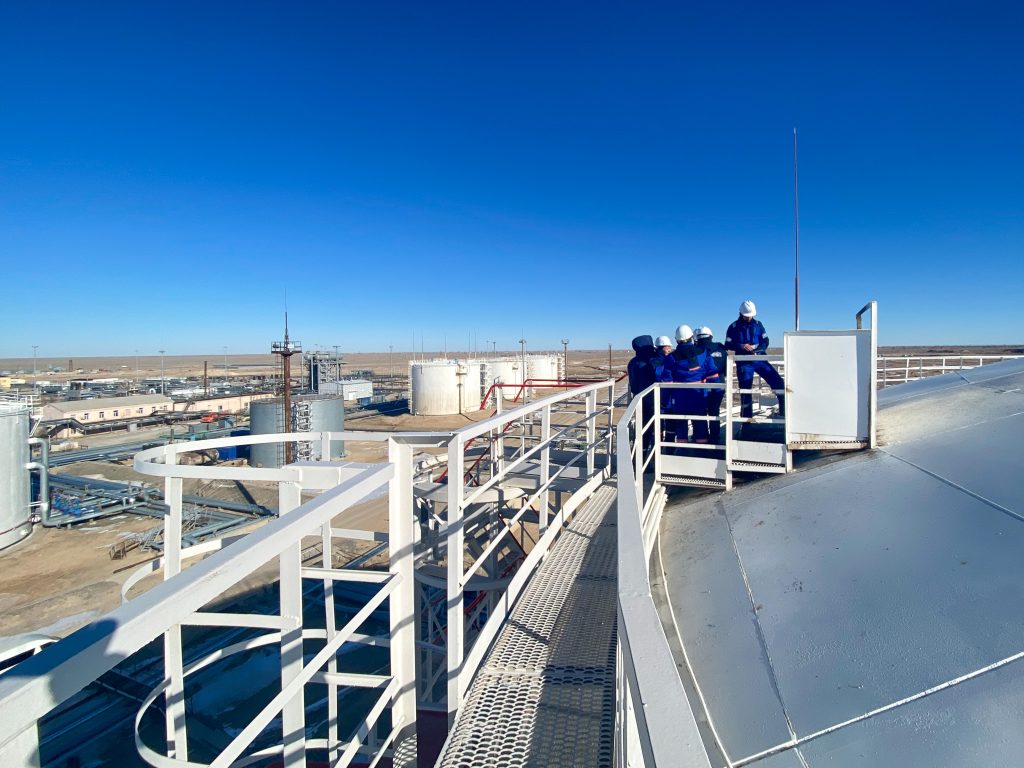
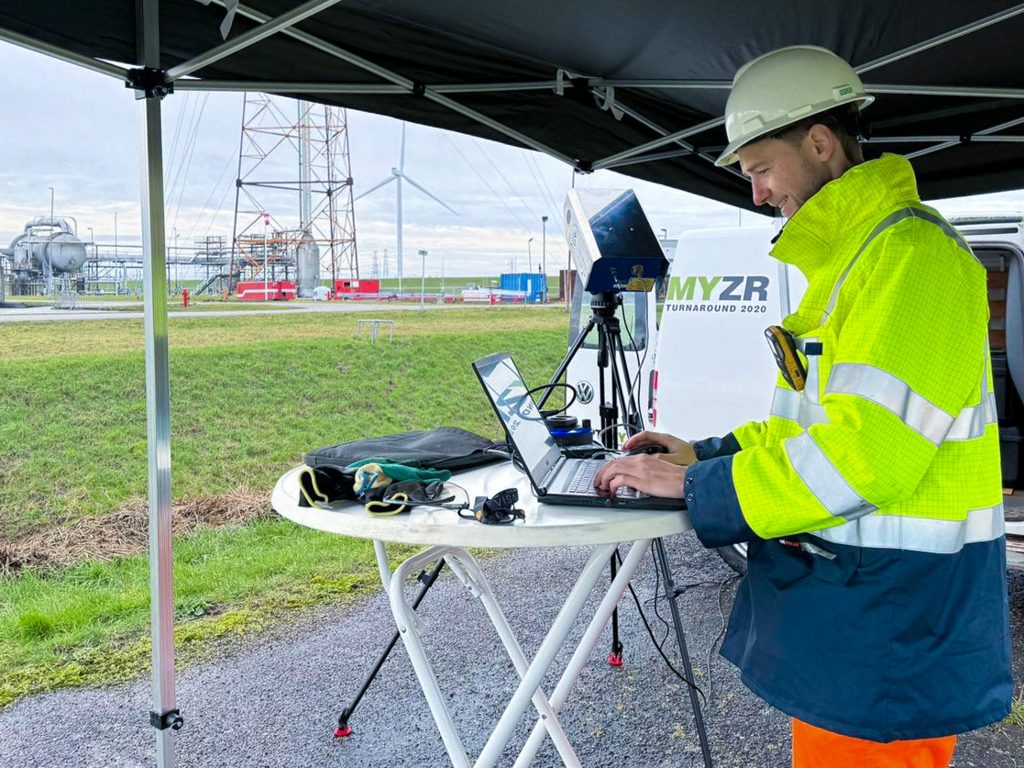
By integrating LDAR with process safety and maintenance, companies can take a more holistic and proactive approach to methane management. They can identify and address potential leak sources before they become significant problems, reducing both emissions and safety risks. They can also optimize their maintenance resources and minimize disruptions to operations by coordinating LDAR activities with planned shutdowns and turnarounds.
Effective integration requires close collaboration between LDAR, process safety, and maintenance personnel.
Companies should establish cross-functional teams and communication channels to ensure that LDAR data and insights are shared and acted upon. They should also regularly review and update their integration strategies to ensure continuous improvement and alignment with changing business needs and regulatory requirements.
Impacts and Opportunities of Germany's Methane Regulation
Germany’s methane regulation is a significant development with far-reaching impacts and opportunities for companies, the environment, and society as a whole. By mandating rigorous LDAR requirements and setting ambitious emission reduction targets, the regulation is forcing companies to confront their methane footprint and take meaningful action. Let’s explore some of the key impacts and opportunities of the regulation.
Reducing Methane Emissions and Climate Impact
The most obvious and significant impact of Germany’s methane regulation is the potential to drastically reduce methane emissions and mitigate climate change. Methane is a potent greenhouse gas, with over 80 times the warming power of carbon dioxide over a 20-year period. By requiring companies to identify and repair methane leaks, the regulation is targeting one of the most significant sources of methane emissions in Germany and beyond. The regulation’s 30% reduction target by 2030 is a major step forward in the fight against climate change.
But the impact of the regulation goes beyond just the direct emission reductions. By setting a strong example and raising the bar for methane management, Germany is sending a powerful signal to other countries and industries. The regulation is likely to spur similar action in other jurisdictions and sectors, creating a ripple effect of methane reduction efforts around the world. Companies that demonstrate leadership in LDAR and methane management will be well-positioned to compete in a low-carbon future.
Improving Air Quality and Health
In addition to its climate impact, reducing methane emissions also has significant benefits for air quality and public health. Methane is a precursor to ground-level ozone, a harmful air pollutant that can cause respiratory problems, aggravate asthma, and damage crops. By reducing methane emissions, Germany’s regulation will help to improve air quality and protect the health of its citizens, particularly in communities near industrial facilities.
The regulation’s LDAR requirements will also help to reduce other harmful air pollutants that are often co-emitted with methane, such as volatile organic compounds (VOCs) and hazardous air pollutants (HAPs). These pollutants can have serious health impacts, including cancer, birth defects, and neurological damage. By identifying and repairing leaks, companies can minimize their emissions of these pollutants and help to create a cleaner and healthier environment for all.
Enhancing Operational Efficiency and Safety
While the primary goal of Germany’s methane regulation is to reduce emissions, it also has the potential to deliver significant operational benefits for companies. By requiring regular LDAR surveys and repairs, the regulation is helping companies to identify and address equipment problems that can lead to inefficiencies, downtime, and safety risks. Leaking equipment not only emits methane but also wastes valuable product and can create hazardous conditions for workers.
By fixing leaks and optimizing their equipment, companies can improve their operational efficiency and reduce their costs. They can avoid product losses, minimize maintenance requirements, and extend the life of their assets. They can also reduce the risk of accidents and incidents, protecting their workers and communities. In many cases, the cost savings from improved efficiency can offset the costs of LDAR compliance, creating a win-win for companies and the environment.
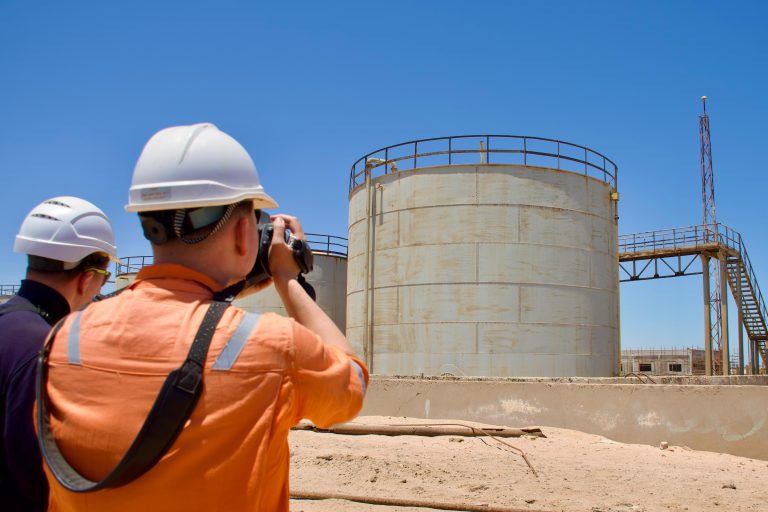
The regulation’s emphasis on using advanced technologies and best practices for LDAR can also help companies to modernize and optimize their operations. By adopting state-of-the-art leak detection methods and data management systems, companies can gain new insights into their facilities and identify opportunities for continuous improvement. They can also develop new skills and capabilities that can be applied to other areas of their business, such as predictive maintenance and asset management.
Driving Innovation in LDAR Technologies and Services
Germany’s methane regulation is not only driving the adoption of existing LDAR technologies and practices but also spurring innovation in new solutions. As companies seek to comply with the regulation’s stringent requirements, they are creating demand for more advanced and effective LDAR products and services. This is opening up new opportunities for technology providers, service companies, and entrepreneurs to develop and market innovative solutions.
Some examples of emerging LDAR innovations include:
- Advanced sensors and imaging technologies for leak detection, such as drone-mounted cameras and laser-based systems
- Predictive analytics and machine learning algorithms for optimizing LDAR survey schedules and targeting high-risk areas
- Mobile apps and cloud-based platforms for streamlining LDAR data collection, analysis, and reporting
- Robotic and automated systems for conducting LDAR surveys in hard-to-reach or hazardous areas
- New repair technologies and materials for quickly and effectively fixing leaks
As these innovations mature and scale, they have the potential to significantly reduce the cost and complexity of LDAR compliance, making it easier for companies to meet the regulation’s requirements. They can also help to accelerate the pace of methane reduction and create new business opportunities in the growing low-carbon economy.
Companies that are proactive in adopting and developing new LDAR technologies and services will be well-positioned to benefit from these opportunities. They can gain a competitive advantage by reducing their compliance costs, improving their operational efficiency, and demonstrating their commitment to environmental stewardship. They can also help to drive the development of new industries and jobs focused on methane management and reduction.
How German Companies Can Ensure Compliance with LDAR Requirements
Complying with Germany’s methane regulation and its LDAR requirements is a complex and ongoing process that requires careful planning, execution, and monitoring. Companies must develop robust compliance strategies and systems to ensure that they are meeting all of the regulation’s requirements and avoiding costly penalties and reputational damage. Here are some key steps that German companies can take to ensure compliance with LDAR requirements.
Conducting an LDAR Readiness Assessment
The first step in ensuring LDAR compliance is to conduct a thorough assessment of a company’s current LDAR practices and capabilities. This assessment should evaluate the company’s existing leak detection and repair processes, technologies, and data management systems against the requirements of the regulation. It should identify any gaps or weaknesses that need to be addressed to achieve compliance.
Some key areas to assess in an LDAR readiness assessment include:
- Identification of covered facilities and equipment
- Existing leak detection methods and frequencies
- Repair timelines and effectiveness
- Recordkeeping and reporting practices
- Training and certification of LDAR personnel
- Integration with maintenance and process safety programs
Based on the results of the assessment, companies should develop a detailed compliance plan that outlines the specific actions and resources needed to meet the regulation’s requirements. The plan should prioritize high-risk areas and establish clear timelines and responsibilities for implementation. It should also include provisions for ongoing monitoring and continuous improvement to ensure sustained compliance.
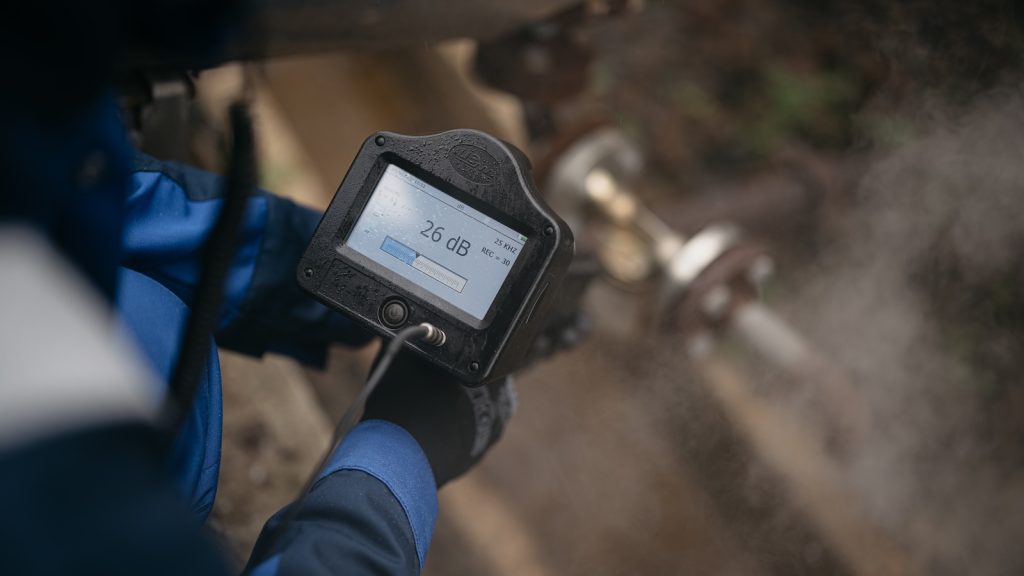
Engaging Qualified LDAR Service Providers
Many companies, particularly smaller ones, may not have the in-house expertise or resources to fully implement an LDAR program that meets the regulation’s requirements. In these cases, engaging qualified LDAR service providers can be an effective strategy for ensuring compliance. LDAR service providers can offer a range of services, including:
- Conducting leak surveys and inspections
- Providing and maintaining leak detection equipment
- Managing repair activities and documentation
- Developing and implementing LDAR plans and procedures
- Training and certifying LDAR personnel
- Providing data management and reporting services
When selecting an LDAR service provider, companies should look for firms with proven experience and expertise in the specific requirements of Germany’s methane regulation. They should also ensure that the provider uses state-of-the-art technologies and follows best practices for LDAR. Companies should carefully review the provider’s qualifications, references, and service agreements to ensure that they are getting high-quality and compliant services.
Engaging an LDAR service provider does not absolve a company of its responsibility for compliance. Companies must still oversee and monitor the provider’s work to ensure that it meets all regulatory requirements and company standards. They should establish clear communication channels and reporting mechanisms with the provider and conduct regular audits and reviews of their performance.
Performing Internal Audits and Leak Surveys
In addition to engaging external LDAR service providers, companies should also conduct their own internal audits and leak surveys to ensure ongoing compliance. Regular internal audits can help companies to identify and address any compliance gaps or issues before they become significant problems. They can also help to foster a culture of continuous improvement and accountability within the organization.
Internal leak surveys should be conducted at the frequency and scope required by the regulation, using approved methods and technologies. Companies should use their own trained and certified LDAR personnel to conduct these surveys, or contract with qualified third-party providers. All leak survey results should be carefully documented and analyzed to identify trends and improvement opportunities.
Companies should also use their internal audits and surveys to validate the work of their LDAR service providers and ensure that they are meeting all contractual and regulatory requirements. Any discrepancies or issues identified should be promptly addressed and corrected. Companies should also use the results of their internal audits and surveys to update and improve their LDAR plans and procedures as needed.
Responding to Inspections and Enforcement Actions
Even with the best compliance efforts, companies may still be subject to regulatory inspections and enforcement actions under Germany’s methane regulation. Companies must be prepared to respond promptly and effectively to any inspections or enforcement actions to minimize their legal and financial risks. Some key steps for responding to inspections and enforcement actions include:
- Cooperating fully with inspectors and providing all requested information and documentation
- Conducting a thorough internal investigation of any alleged violations or deficiencies
- Developing and implementing a corrective action plan to address any identified issues
- Communicating openly and transparently with regulators and stakeholders about the situation and the company’s response
- Seeking legal counsel as needed to ensure that the company’s rights and interests are protected
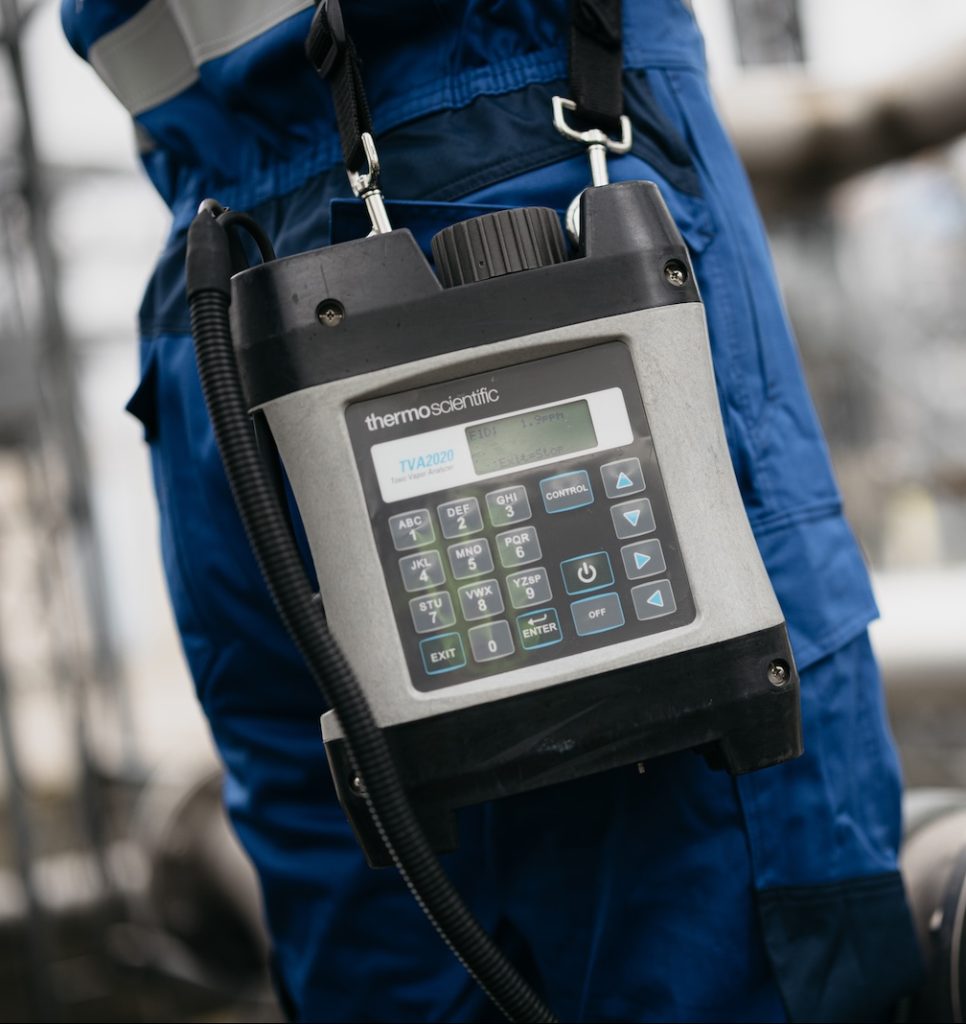
Companies should also use any inspections or enforcement actions as opportunities to learn and improve their LDAR programs and compliance practices. They should conduct root cause analyses of any violations or deficiencies and identify systemic issues that may need to be addressed.
They should also share lessons learned and best practices with other companies and stakeholders to help advance the industry’s collective efforts to reduce methane emissions.
By taking a proactive and comprehensive approach to LDAR compliance, German companies can not only minimize their risks but also maximize their opportunities under the methane regulation. They can demonstrate their commitment to environmental stewardship, improve their operational efficiency and safety, and position themselves as leaders in the low-carbon economy. As the world moves towards a more sustainable future, companies that excel in methane management will be well-positioned to thrive.
CCO TP Europe.
Joey, Chief Commercial Officer at TP Europe, thrives in sales, drawing satisfaction from client happiness and the company's growth. His dedication to staying connected to the field and ambition for global expansion are key to driving our mission forward.
Published: Tp Europe
